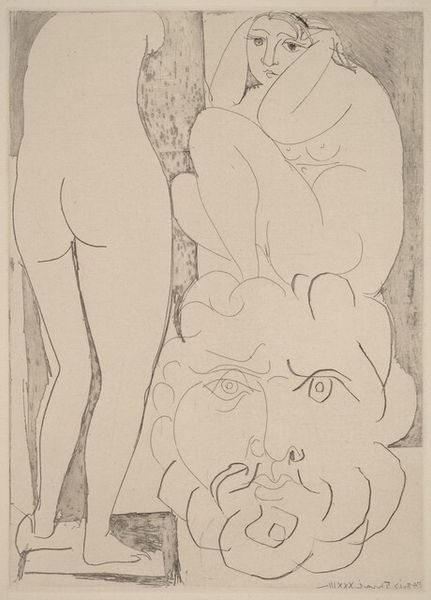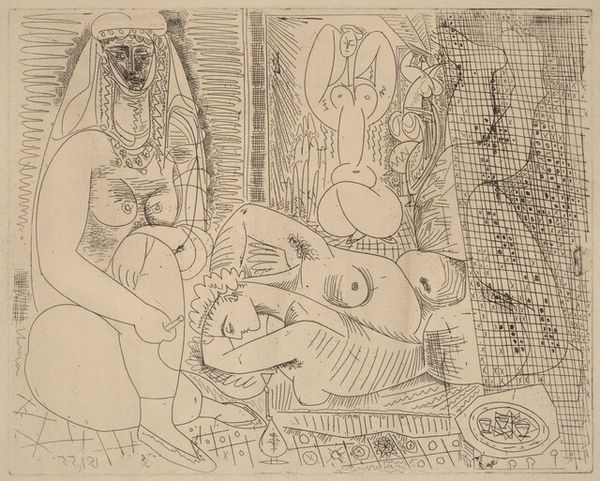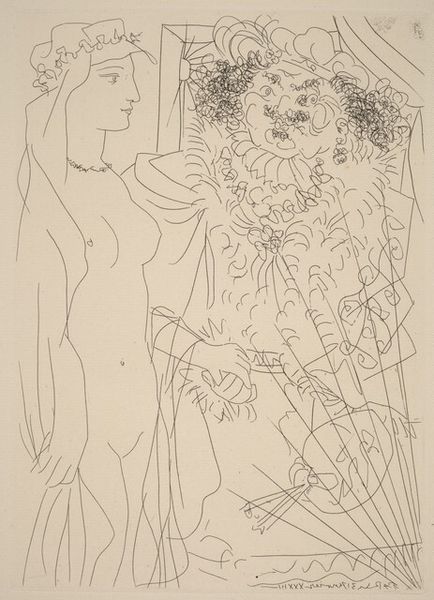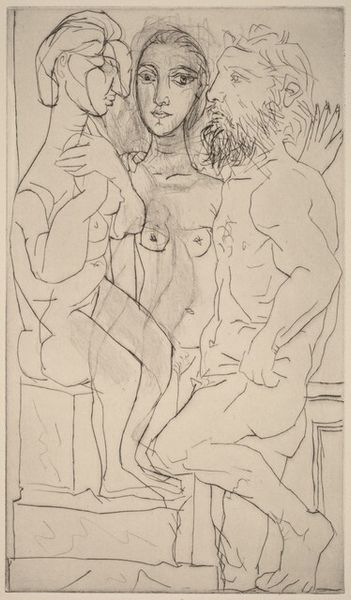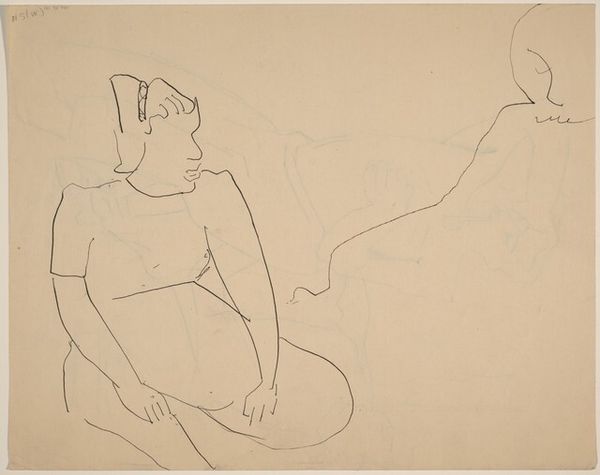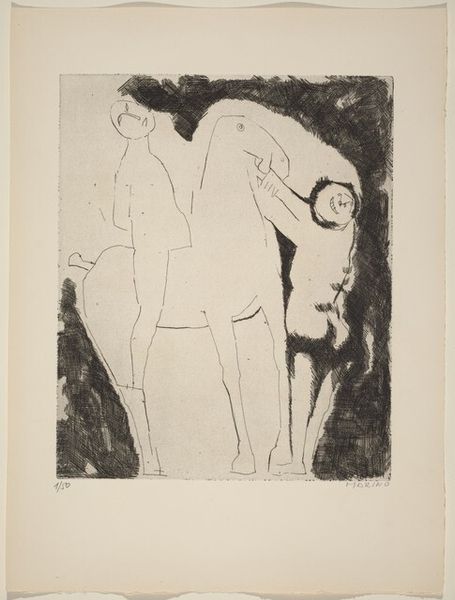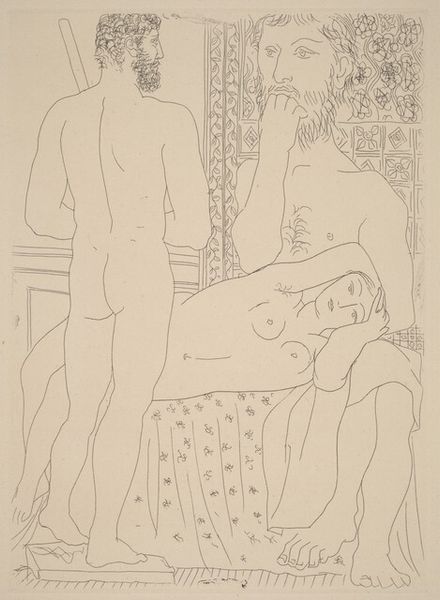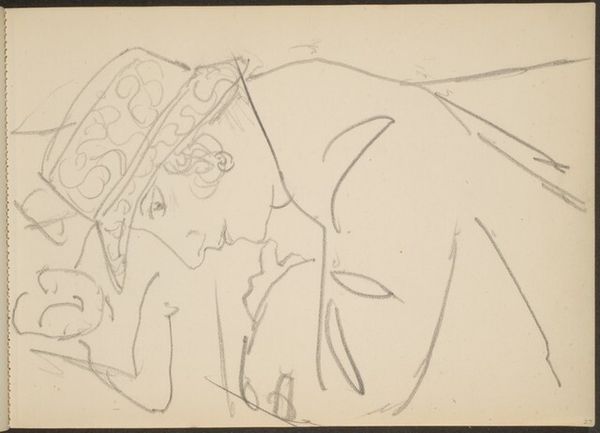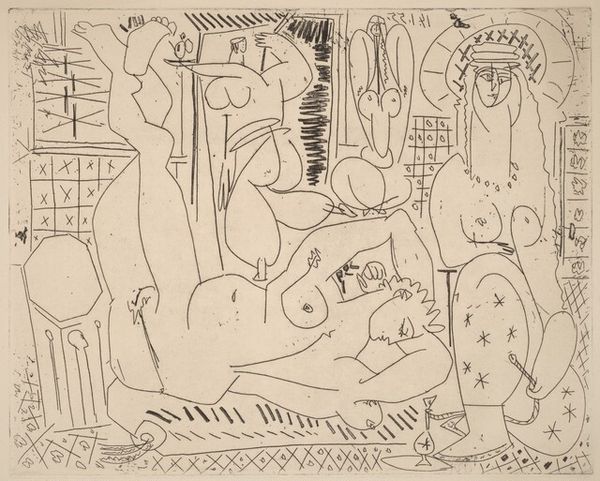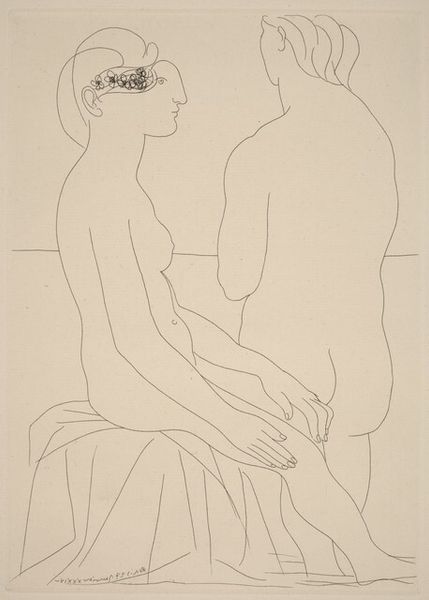
Marie-Thérèse Considering a Surrealist Sculpture of Her Effigy (Marie-Thérèse considérant son effigie surréaliste sculptée) 1933
0:00
0:00
#
comic strip sketch
# print
#
pen sketch
#
cartoon sketch
#
personal sketchbook
#
sketchwork
#
ink drawing experimentation
#
pen-ink sketch
#
sketchbook drawing
#
storyboard and sketchbook work
#
sketchbook art
Copyright: National Gallery of Art: CC0 1.0
Editor: This is Pablo Picasso's 1933 print, "Marie-Thérèse Considering a Surrealist Sculpture of Her Effigy". The stark linework feels almost clinical, especially contrasting the female form with the geometric shapes. What’s striking to you about the piece? Curator: It's intriguing how Picasso deconstructs the idea of 'portraiture' itself, isn’t it? The materials are deceptively simple – ink on paper – yet the print allows for reproducibility, challenging the aura of the unique artwork. Think of the labor involved: from the initial sketch, the work of transferring it onto the plate, the physical act of printing multiple impressions… How does this repetitive process inform the perceived 'value' of the image compared to a unique painting? Editor: That's a fascinating perspective I hadn't considered. I was focused on the formal elements – the lines, the shapes – but you're drawing my attention to the industrial process behind it, disrupting traditional art hierarchies. Curator: Exactly! Consider the socio-economic context too. Was this print intended for mass consumption, or a select few? Who had access to images like these, and how did its accessibility influence its impact? Picasso, by embracing printmaking, engages in a dialogue about the democratization of art. Editor: So, beyond the visual representation, you see this piece as a commentary on the art market itself, mediated through the production process. It makes me consider the implications of the artistic labor involved. Curator: Precisely. The materials, method, and dissemination strategy are not separate from its meaning; they fundamentally constitute it. What does considering process tell us about authorship here, especially when many editions might exist? Editor: I think I am now seeing it through an entirely different lens – less about the figure, and more about how art is created, distributed, and ultimately, valued.
Comments
No comments
Be the first to comment and join the conversation on the ultimate creative platform.
